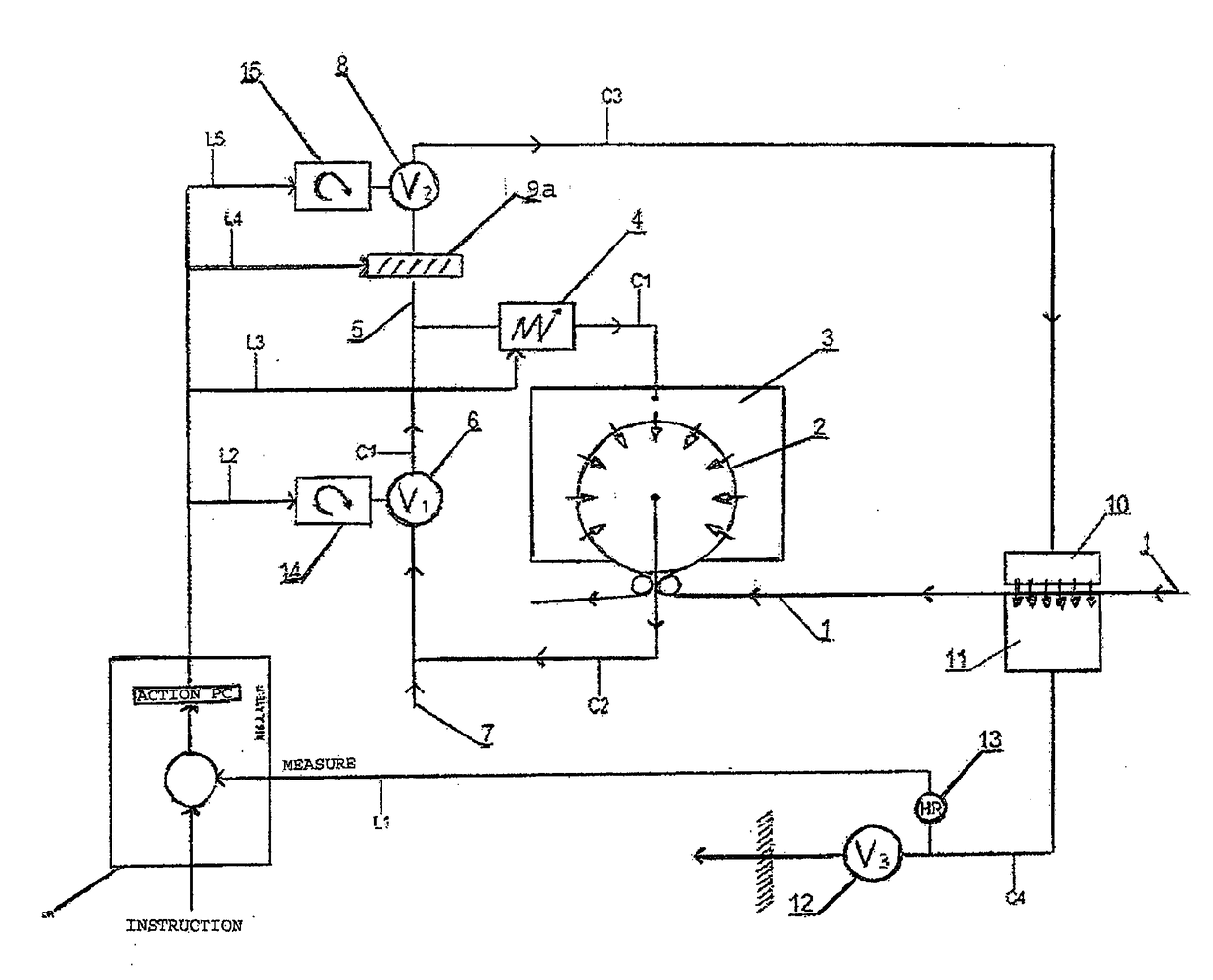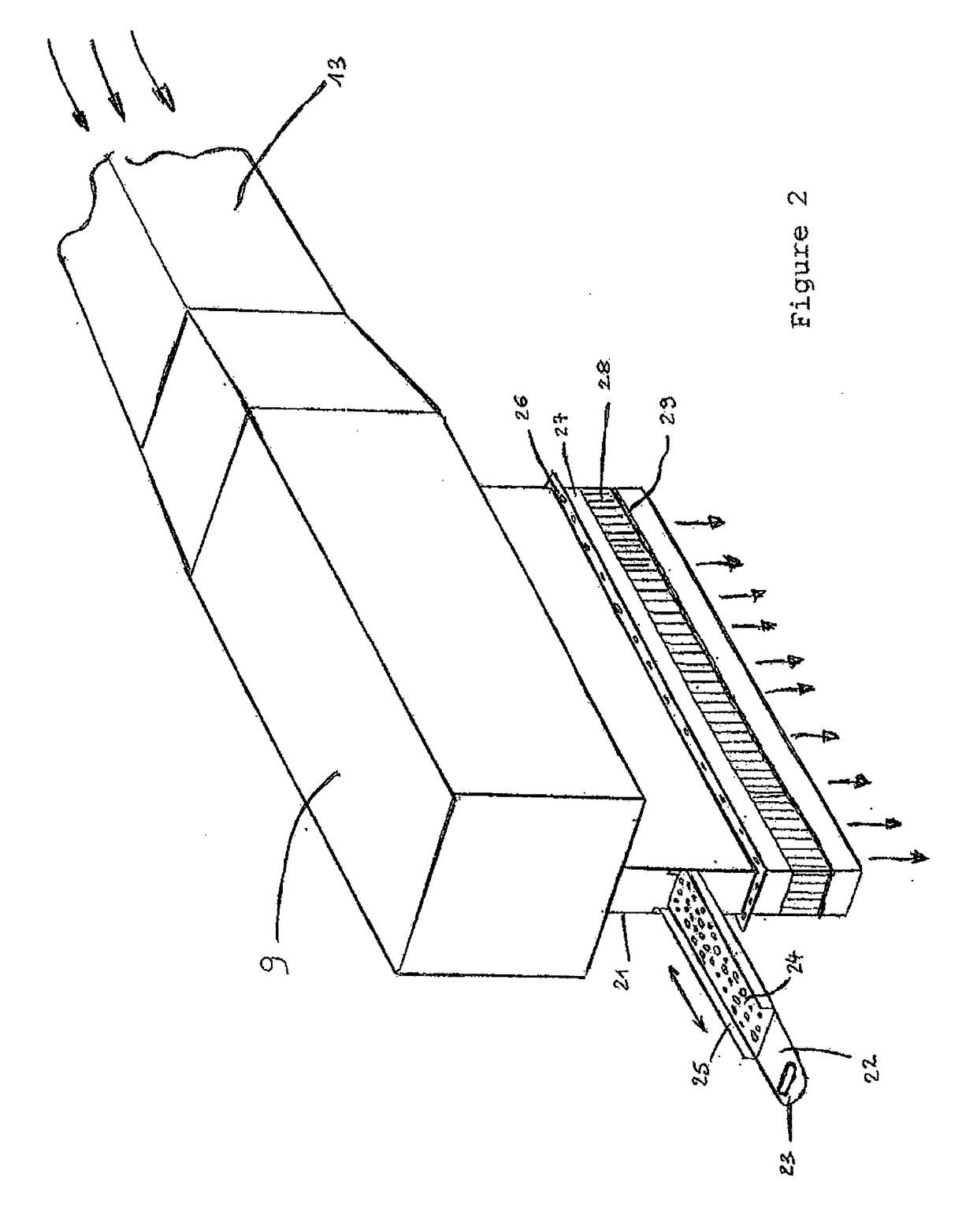Installation for drying a damp non-woven web
a technology for installing and drying non-woven webs, which is applied in drying machines, drying machines with progressive movements, lighting and heating apparatus, etc., can solve the problem that the non-woven web thus obtained is not dried in a uniform manner, and achieves the effect of greatly facilitating maintenance of the installation
- Summary
- Abstract
- Description
- Claims
- Application Information
AI Technical Summary
Benefits of technology
Problems solved by technology
Method used
Image
Examples
Embodiment Construction
[0028]In FIG. 1, the dried web 1 circulates around a drum 2 or on a conveyor.
[0029]Hot air under pressure is injected through an inlet conduit C1 in the hood 3 thanks to a fan V16 (called main fan) and a heat source 4 which heats up the air. This heat source 4 can be, for example, a gas burner or an (oil, air, water or electrical) heat exchanger.
[0030]This hot air then passes over the damp web and the drum 2 (or the conveyor cloth): by means of this process, the water contained in the web is evaporated as the web advances on the drum 2 (or on the conveyor). The air which has passed over the web has been cooled and laden with moisture. It is then taken in by an extraction conduit C2 inside the drum 2 by means of the fan V16 and heated up anew by the heat source 4 and reinjected into the loop and so on.
[0031]The heat source 4 can be positioned upstream or downstream of the fan V16. It is preferably positioned downstream, as shown in the figure, in the case of an exchanger and upstream...
PUM
 Login to View More
Login to View More Abstract
Description
Claims
Application Information
 Login to View More
Login to View More - R&D
- Intellectual Property
- Life Sciences
- Materials
- Tech Scout
- Unparalleled Data Quality
- Higher Quality Content
- 60% Fewer Hallucinations
Browse by: Latest US Patents, China's latest patents, Technical Efficacy Thesaurus, Application Domain, Technology Topic, Popular Technical Reports.
© 2025 PatSnap. All rights reserved.Legal|Privacy policy|Modern Slavery Act Transparency Statement|Sitemap|About US| Contact US: help@patsnap.com



